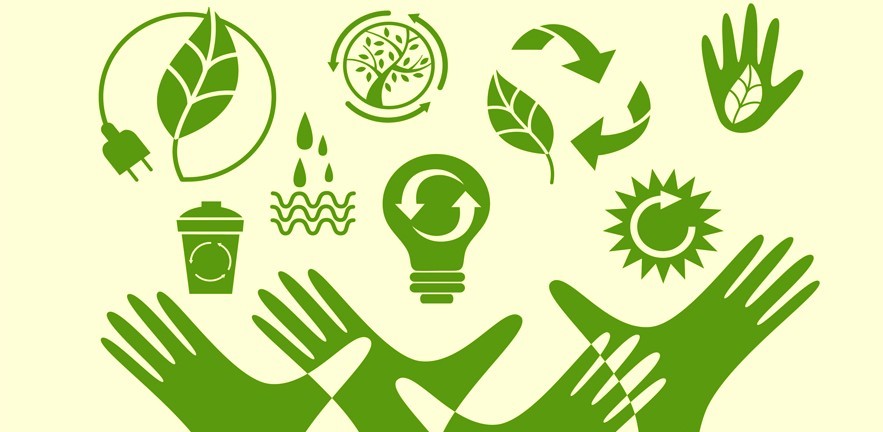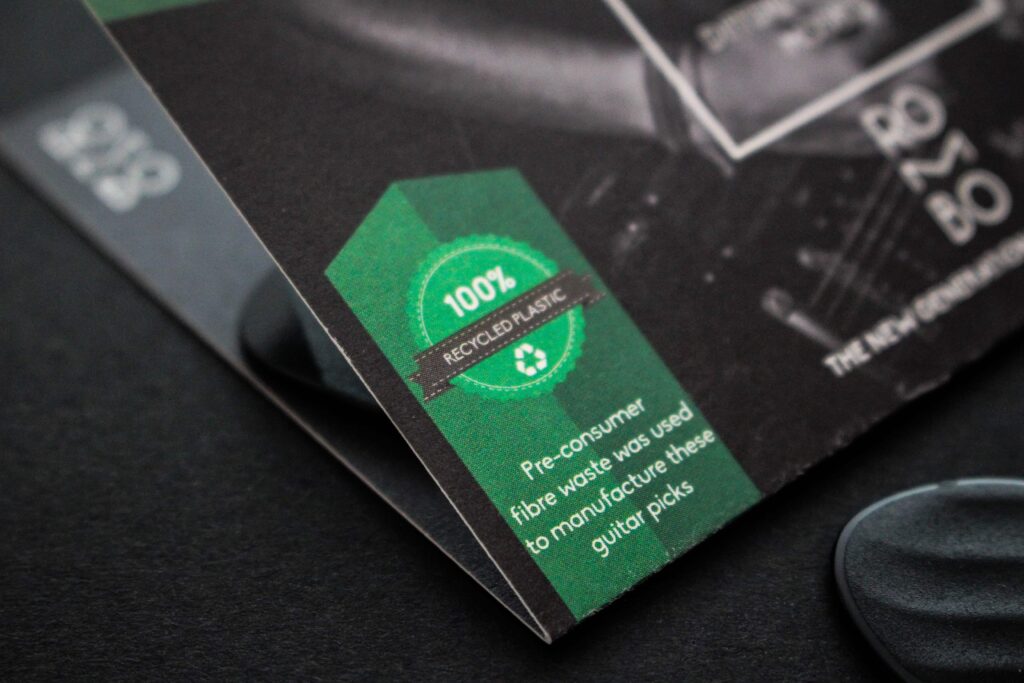
Environmental sustainability is about making responsible decisions that will reduce your business’ negative impact on the environment. It is not simply about reducing the amount of waste you produce or using less energy, but is concerned with developing processes that will lead to businesses becoming completely sustainable in the future.
What Does Environmental Sustainability In Business Mean? An environmental sustainability program supports healthy, active lifestyles by protecting global ecosystems and preserving natural resources.

10 Ways to Make Your Small Business More Sustainable:
Small businesses can have a surprisingly big impact on the environment. As a small business owner, it’s up to you whether that impact is positive or negative. Small business sustainability is a growing practice in the mind of environmentally conscious brands.
Consumers are more willing than ever to invest in non-toxic, eco-friendly products to protect their families and the future of the planet. Today, businesses of all sizes are choosing more environmentally sustainable practices in response, and their customers are noticing.
The numbers speak for themselves:
>>1 in 3 consumers surveyed prefers eco-friendly options.
>>Almost 50% of top US companies and 60% of international companies are investing in strategies that reduce their environmental impacts. (This is a 7% increase between 2012 and 2018 when the survey took place)
>>68% of millennials surveyed purchased a product with an environmental benefit in the past 12 months.
>>63% of Americans surveyed hope businesses will take the lead to drive environmental change
Not only does eco-consciousness help you stay competitive in today’s market, but it sends a positive message of environmental awareness that helps elevate your brand.
If you’re starting a small business, take a look at these ten ways you can make your process more sustainable.

1. Your product source materials
Small business sustainability starts at the source. The first step toward making your business more environmentally friendly is asking the following questions about your source materials:
Are they sourced sustainably?
In other words, does your supplier integrate strong ethical, social, and environmental performances in the production of the materials? An example of this might be responsible water usage in manufacturing.
Are they fairtrade?
Make sure your materials are manufactured by ethical suppliers that pay their employees fair and livable wages.
Are they made with recyclable, renewable, and/or biodegradable materials?
These materials have a minimal impact on the environment, and they do not contain toxic or ozone-depleting substances. Examples include:
Cardboard and paper
Corn starch
Bagasse paper (sugarcane fiber pulp)
Mycelium (mushrooms)
Degradable bubble wrap
Do you practice green procurement?
Make sure you source your goods and services from local suppliers to support the local economy and cut down on transportation costs.
2. Eco-friendly packaging
According to the EPA, “containers and packaging alone contribute to over 23% of the material reaching landfills in the US.” You can significantly reduce your brand’s pollution contribution by changing the way you package your products.
Go with biodegradable packaging
Swap out single-use containers for materials that break down quickly and effectively, like corn starch, mycelium, wood pulp, and seaweed.
Don’t use a mishmash of materials
If your packaging contains two different types of polymers, for example, that can render it unrecyclable. If you must use plastic, stick to one type.
Make it fun — and functional
Have you ever liked a product’s branded packaging almost as much as you liked the product itself? The more stylish, sturdy, and/or useful your packaging is, the less likely it is to end up in a landfill. Your customers will probably find a future use for a reusable drawstring bag with your logo on it, for example.
Packaging is an important part of your brand experience. By making it sustainable, you’ll leave an even better impression.
3. Sustainable storage

A hidden aspect of small business sustainability is where products are stored before being sold. Whether it’s freezers for your food or a warehouse for your wares, the environmental impact of storage can add up over the months and years. Here are a few considerations:
Choose an eco-friendly facility that uses renewable energy for climate control, such as solar panels.
Pack items in green containers instead of pollutive plastics.
If you need to get rid of items you no longer have use for, consider donating them instead of throwing them away.
4. Green shipping and delivery
Small business sustainability doesn’t stop once your products have shipped! Going green with your shipping practices will reduce your carbon footprint even further.
Use sustainable delivery methods
Don’t put a tiny package in a box five times its size. Use packaging that is as compact as possible to minimize cost as well as the amount of space your product takes up in the carrier. This will result in fewer trips and fewer emissions.
Cut down on waste (and cost) by reducing the “Russian Doll” effect of putting a boxed item into a second or third box before shipping.
Consolidate orders when possible. Offer discounts for multiple orders to encourage bulk purchases.
Use environmentally friendly shipping materials
Examples include:
Biodegradable mailing pouches (typically made with 50% renewable wood pulp starch)
Biodegradable filler, like starch-based packing peanuts
Recycled cardboard
Compostable bags
On the flip side, here are materials to absolutely avoid:
Standard mailing pouches with plastic bubble lining, which are difficult to recycle effectively
Styrofoam packing peanuts (or styrofoam anything)
Plastic wrap or cushioning
5. Reduce paperwork and paper billing
The most environmentally friendly paper you can buy is no paper at all. Offices in the US use 12.1 trillion sheets per year. Cost aside, that’s a lot of trees.
Aim to be as paperless as possible
Making the switch to online billing and paperwork is a win-win for everyone. Not only does it drastically cut down on paper waste, but it also vastly increases your physical storage space. Instead of paper receipts, opt for email receipts sent to customers.
If you must use paper…
A 100% paperless workspace is a noble endeavor, but it isn’t always practical. Eventually, you’re going to need a piece of paper. You can still save countless trees by exclusively supplying your office with sustainably sourced recycled paper. If your vendor is local, even better. Just make sure you reduce, reuse, and when you’re finished with it, recycle.
6. Involve your employees

Small business sustainability includes the efforts of your whole team. A company culture that is built around environmental awareness makes it easy to reach your goals.
Curb commutes
Needless to say, working from home is more popular than ever these days, which has many people breathing easier. Giving your employees the option to WFH when possible cuts down on pollution, fossil fuel usage, and reduces your company’s overall carbon footprint.
Turn your team “green”
Encourage your employees to buy into a greener mindset by incentivizing and rewarding environmentally friendly habits and showing appreciation for their efforts. Motivate and engage them by asking for ideas and input on how you can make positive changes both in your workplace and your community. Things like biking to work, zero-waste days, bring your own lunch days. Set goals and celebrate your successes.
7. Make your brick & mortar space sustainable
Whether you rent or own your office or storefront, there are simple measures you can take to reduce your environmental impact within your space.
Green up your environment
If possible, choose a space with plenty of natural light to cut down on energy usage.
Consider the use of LED lamps instead of overhead lighting.
Discourage single-use coffee makers or paper cups. Instead, get a regular coffee maker and encourage your employees to bring their favorite mugs from home.
Adjust your thermostat if possible. Your space doesn’t need to feel like a refrigerator all summer long.
Get on top of your utility bills and analyze your energy expenditures. If you adjust those, you’ll start to see immediate savings.
Use a green cleaning service, if you have the option.
Bring in live plants to improve indoor air quality. (It looks nice, too!)
Take it to the cloud
Just because you’ve invested in physical space doesn’t mean you can’t take advantage of a virtual one too. Using cloud-based solutions cuts down on waste, and can lead to a more streamlined, efficient, and collaborative business process.
8. Waste reduction
Reducing waste is a win-win for businesses because it’s friendly to both the environment and your bottom line.
Don’t send direct mail
Not only are mailers expensive and a little outdated, but they inevitably end up in the trash. Instead, move your promotions into the digital realm and on social media, where they’ll get far more traction. (It goes both ways: if you’re bombarded by junk mail every day, taking the time to remove yourself from unnecessary lists will declutter your mailbox and free up your recycling bin.)
Stick to sustainable swag
Make sure any free promotional items serve a purpose that goes beyond simply getting your brand name out there. Junk items are going to end up in the junkyard eventually. A reusable metal water bottle with your logo on it will get years more mileage than a cheap plastic keychain or ballpoint pen.
9. Make charitable contributions
Help offset your environmental impact by actively supporting the environment. Here are a few ideas:
Start a promotion, such as planting a tree for every 10 products sold.
Use green web hosting, which uses environmental technologies to carry out eco-friendly initiatives.
Donate a percentage of your proceeds to environmental programs.
Set up a fundraiser in your community to promote eco-conscious initiatives.
10. Find environmental certifications & initiatives
With environmental awareness at an all-time high, consumers are becoming increasingly savvy about sustainable business practices. Before you lay claim to your business’s environmental impact, be sure you can back it up.
Obtain a legit green business certification
Examples include:
Green C Certification for supporting environmentally responsible practices
USDA Certified Organic seal for 100% organically produced food
B Corp Sustainability certification for your current and long term environmental and social performance
Green Business Bureau certificate for organizing an office “Green Team” and other internal efforts

Show off your small business sustainability!
You’ve made the effort, so why keep it to yourself? Let everyone know about your small business sustainability practices. Make sure your eco-friendly credentials are loud and clear on your packaging and across all of your marketing channels. Is it 100% recycled/recyclable? Is it biodegradable? Environmental consciousness is a good look for brands. It shows a commitment to a better world, and that’s something to be proud of.
A few simple changes can make a huge difference in helping your small business grow toward a more sustainable future.
Thanks to Nisha, the Senior Content Marketing Manager at Looka.







